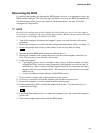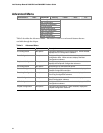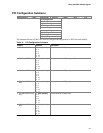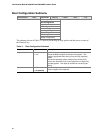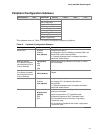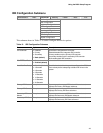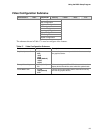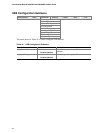
Using the BIOS Setup Program
47
Peripheral Configuration Submenu
Maintenance Main Advanced Security Power Boot Exit
PCI Configuration
Boot Configuration
Peripheral Configuration
IDE Configuration
Diskette Configuration
Event Log Configuration
Video Configuration
USB Configuration
Chipset Configuration
This submenu shown in Table 12 is used for configuring computer peripherals.
Table 12. Peripheral Configuration Submenu
Feature Options Description
Serial Port A • Disabled
• Enabled
• Auto (default)
Configures serial port A.
Auto assigns the first free COM port, normally COM1, the
address 3F8h, and the interrupt IRQ4.
An * (asterisk) displayed next to an address indicates a
conflict with another device.
Base I/O Address
(This feature is present
only when Serial Port A
is set to Enabled)
• 3F8 (default)
• 2F8
• 3E8
• 2E8
Specifies the base I/O address for serial port A, if serial
port A is Enabled.
Interrupt
(This feature is present
only when Serial Port A
is set to Enabled)
• IRQ 3
• IRQ 4 (default)
Specifies the interrupt for serial port A, if serial port A is
Enabled.
Parallel Port • Disabled
• Enabled
• Auto (default)
Configures the parallel port.
Auto assigns LPT1 the address 378h and the
interrupt IRQ7.
An * (asterisk) displayed next to an address indicates a
conflict with another device.
Mode • Output only
• Bi-directional
(default)
• EPP
• ECP
Selects the mode for the parallel port. Not available if the
parallel port is disabled.
Output Only operates in AT
†
-compatible mode.
Bi-directional operates in PS/2
†
-compatible mode.
EPP is Extended Parallel Port mode, a high-speed
bi-directional mode.
ECP is Enhanced Capabilities Port mode, a high-speed
bi-directional mode.
continued



